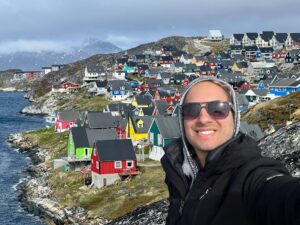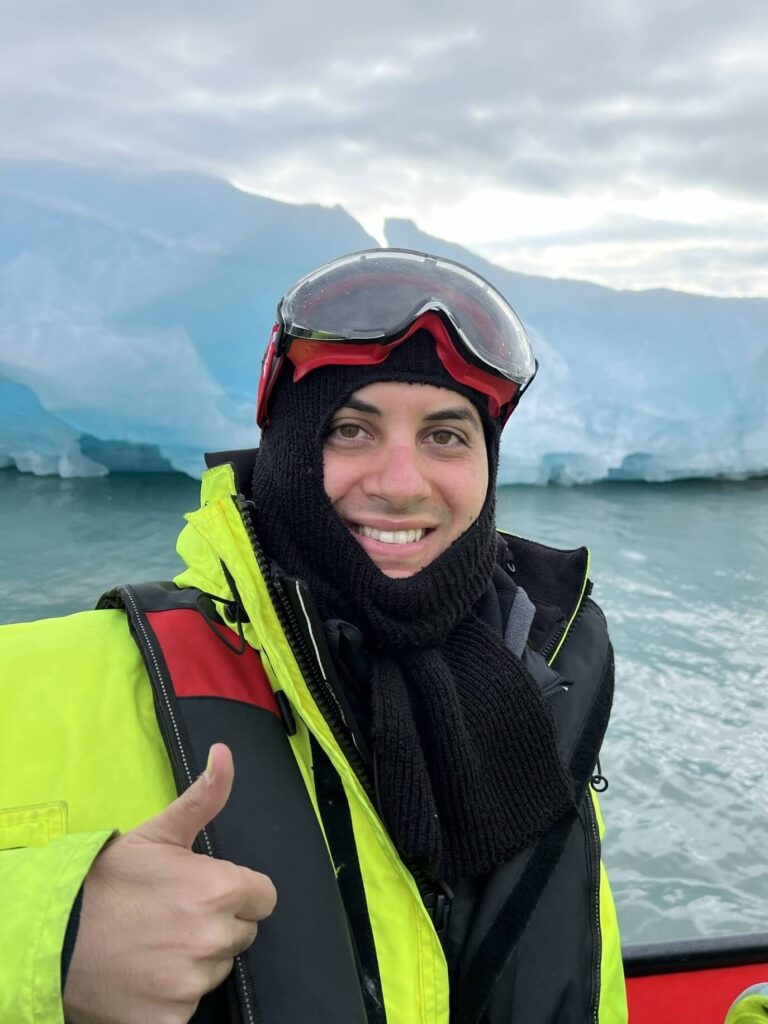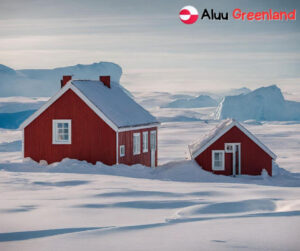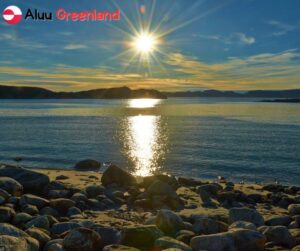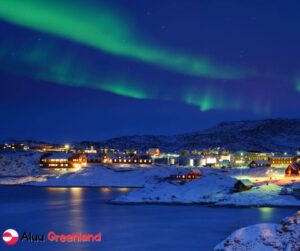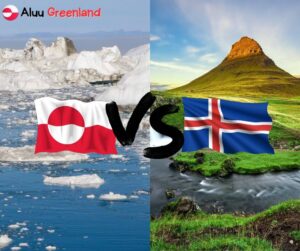Have you ever wanted to own a little piece of the world? Maybe an island off the coast of Spain or even your mountain in Switzerland?
If you’re ready to aim high and think big, look no further than Greenland!
This massive icy expanse has intrigued adventurers since they first discovered it in the early 15th century – but that begs the question: Who owns Greenland these days? Read on to find out!
What country owns Greenland?
The Kingdom of Denmark is the official owner of Greenland, although its inhabitants are allowed to govern their affairs.
Denmark retains control over foreign and military policies but provides Greenland with economic aid and a wide range of other services.
Despite this, Greenlanders have their own Parliament and Prime Minister, a flag, and a national anthem.
Although Greenland is part of the North American continent, Culturally, it’s more European and has closer ties with Denmark than with its neighbors to the West.
And while Greenland’s inhabitants are Danish citizens, Greenland is not part of the Europen Union.
Greenlanders have a different Danish passport than Danish citizens from the mainland.
So, while Denmark is the official owner of Greenland, its inhabitants have increased autonomy and can make some of their own decisions.
This unique arrangement has led to a strong sense of national identity for the people who call Greenland home.
Ultimately, it’s up to the Greenlanders to decide what kind of relationship they want with Denmark.
But either way, the nation of Greenland belongs to both its inhabitants and their neighbor across the sea – Denmark.
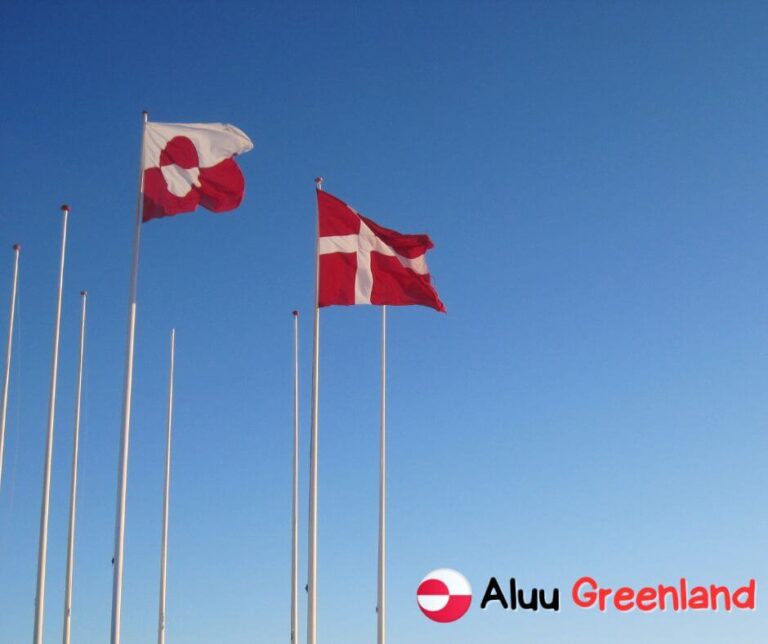
Who officially owns Greenland?
The Kingdom of Denmark is the official owner of Greenland.
The inhabitants can govern their affairs and make some of their own decisions, but Denmark retains control over foreign and military policies.
Exploring the History of Greenland and Its Ownership
Greenland is a unique country with a long and fascinating history of over 4,000 years.
Various native tribes inhabited it and were later taken over by the Vikings and Danish settlers.
During World War II, While the Nazis occupied Denmark, Greenland was occupied by the United States military.
You can still find USA military and space bases today around Greenland – the most famous one is Pituffik Space Base, formerly Thule Air Base, in Qaanaaq, the most northern city in Greenland.
After the war, Denmark regained control of Greenland and has maintained its sovereignty ever since.
Subsequently, in 1979, Denmark granted Greenland the right to self-governance with increased control over domestic affairs and judicial authority in civil matters, paving the way for home rule in 2009.
Despite its small population, Greenland has laws governing immigration and fishing rights and an autonomous government that lends itself to further independence from Denmark.
However, it remains part of the Kingdom of Denmark.
The Viking Age and the Earliest Inhabitants of Greenland
The Viking Age was tumultuous European history characterized by far-reaching exploration and massive cultural upheaval.
One of the fascinating aspects of the Viking era was their shift from seafaring raiders to settlers as they colonized new lands across the North Atlantic.
One of the most remote and challenging lands they decided to settle in was Greenland, a vast and unforgiving island off the coast of North America.
The earliest inhabitants of Greenland, including the Vikings, faced impossible odds with surviving in this harsh environment.
Despite their struggle, these brave adventurers forged a life on the northern frontier, paving the way for future generations to call Greenland their home.
Today, we can still marvel at the incredible feats of those who lived through the Viking Age and survived to tell their tales.
The Union with Denmark in the 1700s and Danish Rule Over Greenland
In the 1700s, Greenland was under Danish rule following the Union with Denmark.
This marked a significant turning point in Greenland’s history, as the country was gradually integrated into the Danish economy and political system.
Despite initial resistance from the local population, the Danish presence in Greenland proved critical in economic and social development.
The establishment of trading posts and missions allowed for the exchange of goods and ideas between Greenland and Denmark, thus contributing to the modernization of Greenlandic society.
Today, while Greenland is primarily self-governed, the country retains strong ties with Denmark, and the legacy of Danish rule can still be felt in Greenlandic culture and society.
The US Interest in Greenland
Greenland, the world’s largest island, has recently garnered much attention from the United States.
While the island has long been regarded as a strategic location due to its position between North America and Europe, it is also rich in natural resources, including rare earth minerals crucial to modern technologies.
In addition, with the melting of the Arctic ice, new shipping lanes are opening up, further increasing the value of Greenland’s location. While Denmark currently governs the island, the US has expressed an interest in purchasing it.
This has sparked debate and controversy, with some arguing that it is a vital strategic move and others questioning the ethics and feasibility of such a purchase. Regardless of the outcome, the US interest in Greenland will have far-reaching implications.
Self-Government and Modern Possibilities for Ownership of Greenland
Greenland, the world’s largest island, has been a semi-autonomous territory of Denmark since 1979.
However, recent discussions have arisen about the possibility of Greenland gaining more self-governance or even complete independence from Denmark.
With its abundant natural resources, including oil, gas, and minerals, the ownership of Greenland is becoming increasingly relevant in today’s modern society.
Self-government would give the region more significant control over these resources, potentially leading to economic growth and development.
While the topic is complex and controversial, it is essential to consider the possibilities and implications of such a move.
A Look Toward the Future – What’s Next for Greenland’s Ownership Rights
Greenland’s ownership rights have been discussed for many years, and the future offers an exciting shift in perspective.
The country has been under Danish rule since the early 18th century, but a growing desire for independence has caused some to wonder what’s next for Greenland.
The country has taken steps to gain greater autonomy recently, but experts predict that complete independence is still several years away.
Regardless, the future is bright for Greenland, and its people will undoubtedly play a critical role in shaping its destiny.
From tourism to resource extraction, there are plenty of opportunities for growth and development, and the world will be watching as Greenland navigates the challenges ahead.
Frequently asked questions
Here are some questions you may have about Greenland’s ownership rights:
Why does Denmark still own Greenland?
Denmark has been in Greenland since the early 18th century when it established trading posts and missions.
Since then, Greenland has been gradually integrated into the Danish economy and political system.
Denmark still owns Greenland because of the strategic importance of the island and its abundant natural resources.
For the same reasons, other countries like the USA started to put an eye on Greenland in the last few years; that’s why Denmark has not let go of it and hasn’t taken any steps towards the independence of Greenland.
Does Denmark own Iceland or Greenland?
Denmark owns Greenland. Iceland is an independent nation with its government, economy, and currency.
But actually, Iceland was under Danish rule until the early 20th century, when it gained its independence.
Who owned Greenland before Denmark?
Norway owned Greenland before Denmark.
Norway shook the status quo when it regained complete independence in 1905, refusing to accept Denmark’s claim over the former Norwegian possession of Greenland.
That is until Hallvard Devold, a daring Norwegian whaler, decided to take matters into his own hands in 1931 and set out to occupy part of Eastern Greenland – showing that not even a century of separation could keep these two nations from claiming what was theirs.
Well, at least Norway got its hands on Svalbard – another fascinating arctic island that remains under Norwegian control until now.
Does Greenland get money from Denmark?
Yes, Greenland does receive money from Denmark.
The Greenland economy is heavily supported by the generous helping hand from its good buddy Denmark, who supplies around half the government revenues.
Greenland is right! If Denmark wants Greenland so badly – they can pay!
Greenland is working to become more economically independent by developing its natural resources and promoting tourism.
Can Greenland leave Denmark?
In the future, Greenland will likely be able to stand on its own two feet without relying too heavily on Denmark.
The country is working towards greater autonomy, and a growing desire for independence can be felt nationwide.
However, Greenland may be completely independent of Denmark for several years-
Denmark supports Greenland in many ways, from military protection to economic and cultural collaboration.
Before complete independence is achieved, Greenland will have to consider the consequences of such a move carefully.
But no matter what happens, one thing remains certain: Greenland will always remain an integral part of the Danish kingdom.
Why is Greenland not included in Denmark?
Greenland is not included in Denmark because it has its government and constitution. It is an autonomous country within the Kingdom of Denmark but not part of the Danish mainland.
In addition to its particular political status, Greenland’s unique culture and language set it apart from the rest of the nation.
How did Denmark claim Greenland?
In 1380, Greenland became an official possession of Denmark due to the Norwegian kingdom being under the Danish Crown.
Despite early Norse settlements, the colony eventually failed due to Norway’s lack of attention during the 1300s and 1400s.
In conclusion
Denmark has had an extensive history with Greenland and is still strongly connected today.
Denmark initially held control of Greenland through political and economic ties, but over time the island has become more autonomous, and its inhabitants have shown an increasing desire for independence.
No matter what the future holds for Greenland, one thing is sure – Denmark will continue to be an essential partner in the country’s development.
I hope this answers the questions you had about Denmark and Greenland!
Let me know in the comment section if there’s anything else you would like to know.
Until next time – keep reading more by visiting my guides section!
Happy exploring! 😉

